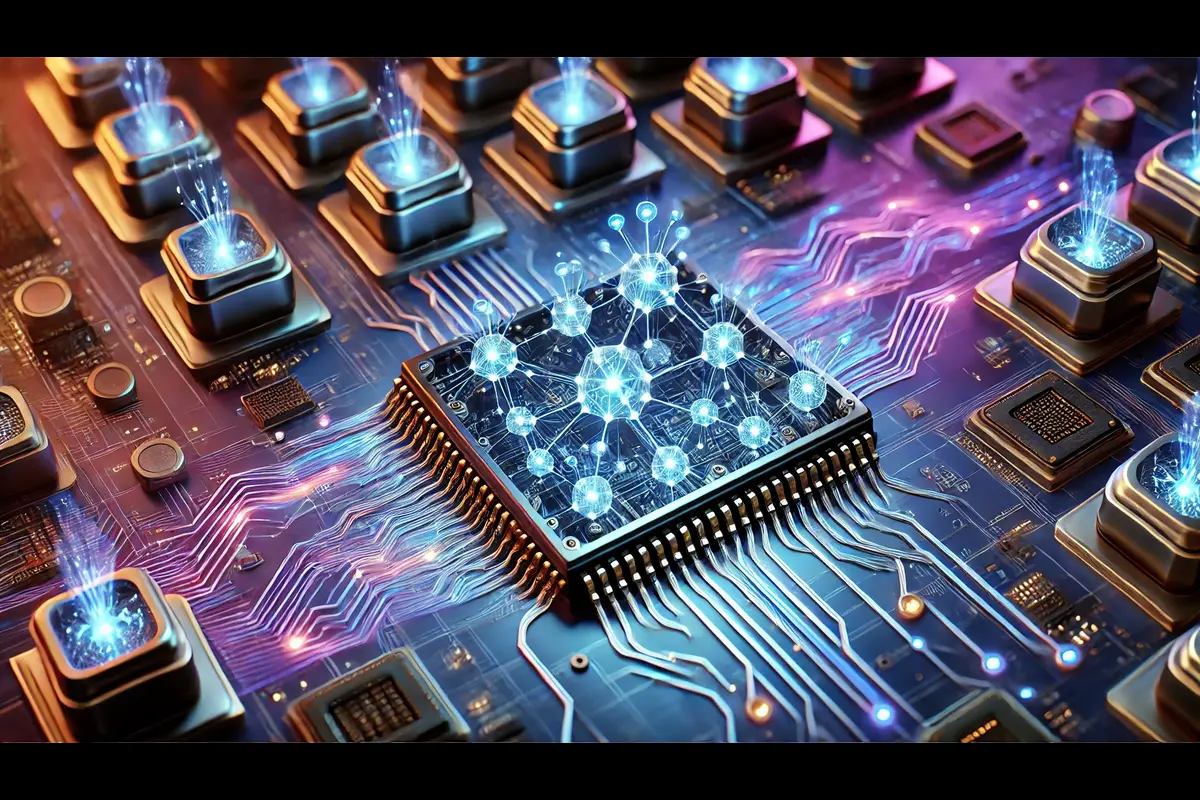Why Is the Tech World Excited About Memristor Circuits?
Memristor Circuits are a new kind of electronic part. They could change how computers are built. The word “memristor” mixes “memory” and “resistor.” It’s a device that remembers how much electricity has flowed through it. Leon Chua came up with the idea in 1971. Hewlett-Packard (HP) made the first one in 2008. Memristors can hold information without power. This makes them great for brain-like computing, storing lots of data, and saving energy.
Types of Memristor Circuits
Passive Memristor Circuits
Passive memristor circuits consist of memristors that operate without the need for additional active components, such as transistors. Because of this, they are simpler and more energy-efficient. These circuits are primarily used for memory storage and signal processing. For example, they can hold data without needing a constant power supply, which makes them perfect for low-power devices. Additionally, their non-volatile nature means they don’t lose information when the power is turned off. Therefore, passive memristors are ideal for applications where saving energy is important.
Active Memristor Circuits
Active memristor circuits are like the master conductors of a high-tech orchestra, blending transistors, operational amplifiers, and other active components to fine-tune how memristors perform. These dynamic circuits play a starring role in cutting-edge fields like adaptive learning systems, artificial intelligence (AI), and neuromorphic computing. Why are they so vital? Because they enable lightning-fast, real-time processing and mimic the brain’s synaptic learning—key ingredients for systems that evolve and adapt on the go. In short, these circuits are the unsung heroes powering the next wave of intelligent technology!
Hybrid Memristor Circuits
Hybrid memristor circuits combine memristors with traditional semiconductor elements such as MOSFETs (Metal-Oxide-Semiconductor Field-Effect Transistors) to enhance functionality. These circuits are particularly advantageous in analog computation, hybrid memory storage, and reconfigurable logic architectures.

Modern-Day Implications and Applications of Memristor Circuits
High-Density Non-Volatile Memory
One of the most significant applications of memristor is in Resistive Random Access Memory (ReRAM), a promising alternative to Flash memory. Unlike conventional memory technologies, ReRAM provides higher density, lower latency, and reduced power consumption. Companies such as HP, Intel, and Samsung are actively exploring memristor-based memory solutions to replace traditional NAND Flash storage.
Neuromorphic Computing
Memristors are a critical component of neuromorphic computing, which aims to mimic the functioning of biological neural networks. By utilizing memristor synapses, researchers are developing brain-like processors capable of adaptive learning and parallel computation. IBM’s TrueNorth and Intel’s Loihi chips incorporate memristor-inspired architectures to enhance machine learning and AI capabilities.
Analog and Edge Computing
In the domain of analog computing, memristors offer efficient processing of continuous data streams. This application is particularly useful in edge computing, where real-time data processing is required with minimal power consumption. Memristors can be integrated into IoT (Internet of Things) devices, autonomous vehicles, and smart sensors, enabling them to operate efficiently without relying on cloud-based computations.
Cryptographic Security and Encryption
Due to their ability to generate unique and unpredictable resistance states, memristors have found applications in hardware security and cryptographic systems. They serve as the foundation for Physically Unclonable Functions (PUFs), ensuring secure authentication and encryption in banking systems, digital transactions, and cybersecurity frameworks.
Reconfigurable Logic Circuits
Memristor enable field-programmable logic applications where circuit configurations can be dynamically modified. This is crucial for FPGA (Field-Programmable Gate Arrays) and adaptive hardware, allowing on-the-fly modifications in robotics, telecommunications, and aerospace systems.
Conclusion
Memristor circuits are a big change in computing and memory storage. They can save data without power and adjust how they work. This makes them better than typical silicon technologies. They are helpful in new fields like brain-like computing, AI, and edge processing. Memristors could transform industries, from keeping data secure to self-driving cars. As we keep studying them, memristors will open up new ways to make computers faster and stronger.






